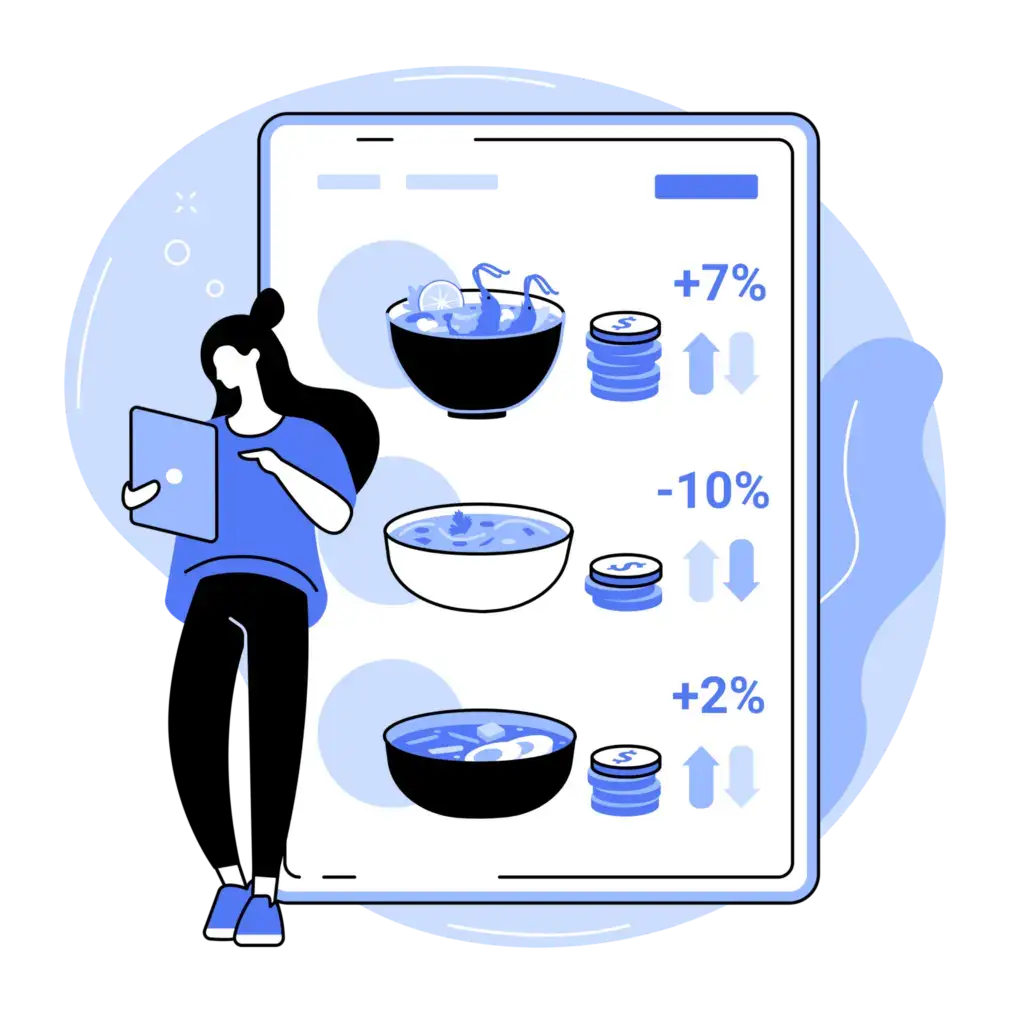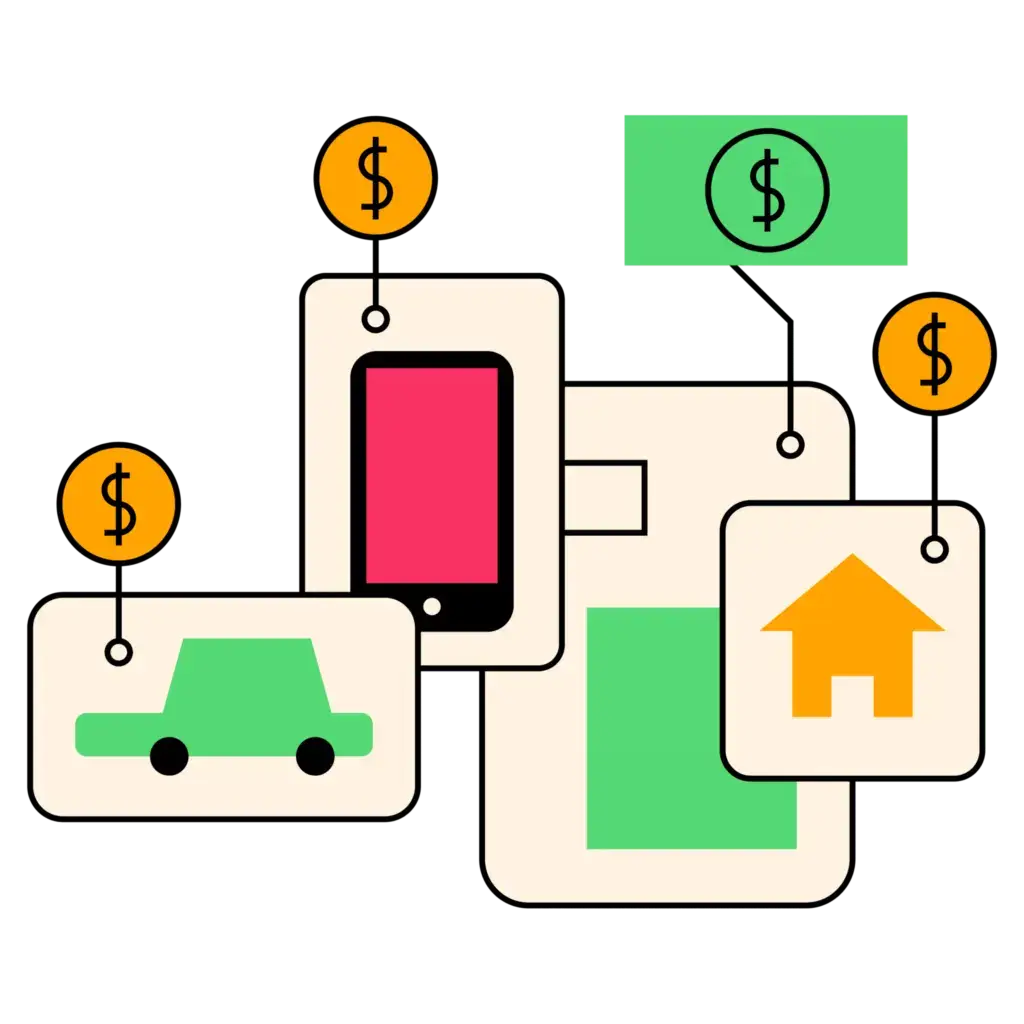In today’s market, every business is looking for ways to maximize profits, and dynamic pricing has emerged as a powerful tool for achieving that goal.
Dynamic pricing is a strategy that allows businesses to adjust their prices in real time based on changing market conditions, customer behavior, and other factors.
In this blog, we will cover everything you need to know about dynamic pricing, including how it works, its benefits, and the key factors to consider when implementing it. We will also discuss the role of proxies in dynamic pricing and how IPBurger’s rotating residential proxies can help businesses gather the data they need to make informed decisions. With our expert guidance, you can use dynamic pricing strategies to maximize your profits and stay ahead of the competition.

What is Dynamic Pricing?
Maintaining a competitive edge in the market can be challenging for businesses. This is where dynamic pricing comes into play.
Dynamic pricing is a pricing strategy that allows companies to adjust prices based on real-time market demand and other factors. By doing so, businesses can optimize prices for each customer, thereby increasing profits.
The e-commerce, travel, hotel industry, hospitality, and entertainment sectors can all use this strategy; it is not exclusive to any one industry. Proxies are often used to automate data collection and analysis, making it easier for companies to implement dynamic pricing strategies effectively.
The Benefits of Dynamic Pricing
Introducing variable prices to a business can lead to a myriad of benefits.
- Increased revenue, as businesses can optimize prices for each customer based on demand and competition.
- Improved customer satisfaction means customers are more likely to purchase products when they are priced appropriately.
- Better inventory management and reduced the risk of overstocking or understocking.
It’s clear that a successful dynamic pricing strategy has the potential to revolutionize how businesses operate in today’s market.
Data collection for dynamic pricing
Gathering relevant data is essential for implementing an effective dynamic pricing strategy. It involves collecting real-time information on customer demand, market trends, customer behavior, and competitor pricing to adjust the price point based on demand and other factors.
Proxies can play a pivotal role in data collection for dynamic pricing by helping to quickly scrape the web and collect large amounts of information from various sources on the internet. By leveraging proxies to gather real-time data, businesses can make informed decisions about value-based pricing and stay competitive.
Common types of data collected for dynamic pricing include current market demand, stock levels, original price, lowest price, fluctuations, customer demographics, purchasing history, and other variables influencing pricing decisions.
The Key Factors in Dynamic Pricing
Understanding the key factors in variable pricing is essential for businesses to make informed decisions about their pricing strategies. These factors include customer behavior, competitor pricing, seasonality, and inventory levels. By tracking these variables, businesses can implement real-time prices, offering the right product prices at the right time to optimize profits.
For example, understanding customer buying patterns and demand prices can help determine when to offer discounts or promotions to encourage purchases. Similarly, tracking inventory levels can help businesses avoid overstocking and underpricing their products or services.
Overall, an effective dynamic pricing strategy requires a deep understanding of these key factors and careful monitoring to maximize profits and grow your profit margin.

Who uses dynamic pricing?
Businesses of all sizes use changing prices, from tiny retailers and Uber to airlines and Amazon. By adjusting prices based on real-time market demand and other factors, dynamic pricing can help businesses stay competitive and maximize profits.
eCommerce businesses often use variable pricing to set prices that optimize revenue from their inventory, while hotel rooms and airline tickets change prices to suit supply and demand. Retailers also benefit from variable prices by adjusting prices based on seasonality or competitor prices.
Dynamic Price Strategies for Maximum Profits
Optimizing prices for each customer and transaction can be achieved with dynamic price strategies, which adjust prices based on real-time market demand and other factors.
Surge pricing, peak pricing, time-based pricing, and segmented pricing are common approaches used to increase profits. However, implementing these strategies requires careful analysis of pricing data to balance maximizing profits with maintaining customer loyalty.
Proxies can help businesses collect data on competitors’ different prices and market trends to inform their decisions, enabling them to stay ahead of the competition and maximize profits.
Testing and refining price strategies
To maximize profits with dynamic pricing, testing and refining strategies are crucial. This can be accomplished using proxies to gather data on competitors’ prices and consumer behavior. Businesses can adjust pricing decisions by tracking the impact of price changes on sales volume.
Balancing maximizing profits with retaining customer loyalty is vital with the use of dynamic pricing strategies.
Regularly reviewing and updating your dynamic pricing model can help you stay ahead of the competition in today’s ever-changing market.
The Challenges, Risks, and Disadvantage
Dynamic pricing comes with its fair share of challenges and risks.
- One of the most significant hurdles is the difficulty of accurate price prediction, which can result in overpricing or underpricing. A higher price risks alienating customers and losing their loyalty, while underpricing can lead to missed profits.
- Another challenge is the potential for price manipulation, where competitors may use proxies to obtain lower prices and undercut businesses.
- Additionally, businesses must consider legal and ethical considerations when implementing dynamic pricing strategies to avoid negative consequences for brand reputation.
Despite these challenges, dynamic pricing remains a powerful tool for businesses to boost conversion rates and stay competitive in today’s market.
The difficulty of price prediction
Predicting prices accurately is challenging, especially in today’s dynamic market. Fluctuating demand, seasonality, weather conditions, and other factors can make setting optimal product and service prices difficult.
To overcome this challenge, businesses must use a data-driven approach, considering competitor prices and customer behavior.
While proxies can improve price prediction accuracy, balancing their use with other strategies to avoid introducing risks such as inaccuracies or legal issues is essential.
Thus, implementing a dynamic price strategy incorporating proxies can help businesses stay competitive in an ever-changing market.
The risk of overpricing
One of the significant risks is overpricing. Constantly changing prices based on market demand can decrease sales and negatively impact a brand’s reputation if the prices are too high. This risk becomes more pronounced in highly competitive markets where customers have plenty of options.
Therefore, keeping track of competitors’ price strategies is essential to ensure your prices remain competitive and avoid overpricing. Additionally, proxies can help businesses gather data on market demand and customer behavior to adjust their pricing method accordingly and mitigate the risk of overpricing.
Effect on brand loyalty
Fluctuating prices can negatively affect customer loyalty toward a brand. Customers may perceive the price changes as unfair and begin to doubt the trustworthiness of the company. Therefore, companies must balance maximizing profits with maintaining customer loyalty and transparency.
Dynamic pricing strategies should be implemented after carefully considering market trends and consumer behavior. Implementing proxies in such strategies can help mitigate some risks by providing a closer and clearer relationship to market demands.
The complexity of dynamic pricing
Implementing dynamic pricing strategies can be challenging due to the complexity of the process. It requires a deep understanding of consumer behavior, market trends (peak times and peak season), pricing structure, and supply and demand dynamics.
Dynamic pricing algorithms must be constantly updated to reflect the latest market conditions. Incorrectly implemented dynamic pricing strategies can lead to customer dissatisfaction, lost revenue, and reputational damage. Therefore, it is essential to thoroughly understand the complexities involved in dynamic pricing before implementing any strategy.
Effective use of proxies can help mitigate some of the risks associated with dynamic pricing by providing accurate data on market trends and consumer behavior.
Potential for price manipulation
Dynamic pricing is a powerful tool for retailers to optimize their profits, but it also opens up opportunities for price manipulation by competitors or third-party proxies. Retailers need to be vigilant and implement safeguards to prevent malicious activities that could harm their revenue and reputation.
One such safeguard could be anti-bot technology, which can detect suspicious behavior and block unauthorized website access. In addition, monitoring pricing patterns and keeping a close eye on market trends can help retailers stay ahead of the game and minimize the risks associated with dynamic pricing.
Is dynamic pricing illegal?
Dynamic pricing is not illegal and is a common practice in many industries. However, dynamic pricing practices must comply with antitrust laws and regulations to prevent price fixing and other anti-competitive behaviors. Additionally, businesses must be transparent about their pricing policies.
Proxies for Gathering Dynamic Pricing Data
As businesses increasingly turn to dynamic pricing, the need for accurate and timely data on market trends and consumer behavior has never been greater.
Proxies are the most valuable pricing strategy tool. They allow businesses to collect this information without running afoul of websites that might consider price scraping suspicious activity. Businesses can avoid IP blocks and collect pricing data from multiple sources by routing requests through a proxy server.
Residential proxies offer a higher level of anonymity and are ideal for price scraping, while datacenter proxies are faster but may be more easily detected by websites.
Proxy rotation can help ensure accurate pricing data collection, and using a proxy service provider can save time and resources in maintaining a proxy infrastructure.
Types of Proxies for Dynamic Pricing
Selecting the correct proxy type is crucial for effectively implementing dynamic pricing strategies. Three types of proxies are available for data collection: residential proxies, data center proxies, and mobile proxies.
- Residential proxies simulate real user behavior, making them ideal for authentic data collection.
- Datacenter proxies offer faster access to large amounts of data, although websites may more easily detect them.
- Mobile proxies are perfect for location-specific pricing, as they allow access to websites as if browsing from a mobile device in a specific location.
Choosing the right proxy type can ensure accurate and reliable data collection, which is crucial to maximizing profits in today’s market.
Benefits of Using Proxies for Dynamic Pricing
The benefits of using proxies for dynamic pricing are numerous.
- Proxies allow businesses to gather accurate and up-to-date pricing data from competitors and marketplaces.
- Businesses can adjust prices based on market trends, changes in demand or supply, and other factors that affect pricing decisions.
- You can ensure that you comprehensively understand the market and the competition, ensuring their price decisions are informed and effective.
- Proxies also offer the ability to geo-target specific locations, allowing businesses to analyze trends in different regions. This can be particularly useful for businesses that operate in multiple regions or countries.
- By analyzing regional price trends, businesses can optimize their variable pricing strategies for each location, resulting in increased profits and a competitive edge in the market.
Overall, using proxies is essential for staying competitive in today’s rapidly changing market.
IPBurger Rotating Residential Proxies for Dynamic Price Savvy
Maximizing profits through dynamic pricing requires accurate and up-to-date data on competitor price strategies and market trends.
Proxies play a crucial role in this process by allowing businesses to gather large amounts of data without getting blocked or detected.
IPBurger’s rotating residential proxies allow businesses to scrape vast amounts of data without detection, giving them a competitive edge in the market.
By combining dynamic pricing with proxies, businesses can optimize their pricing strategy, resulting in increased profits and tremendous success in today’s market.
Conclusion
In conclusion, variable pricing is an excellent way to boost profits in today’s market. By utilizing proxies to collect data and refine price strategies, companies can stay ahead of the competition and maximize revenue.
However, it’s essential to be aware of the challenges and risks, such as difficulty in price prediction, the risk of overpricing, and the potential for price manipulation.
That’s why IPBurger offers rotating residential proxies designed explicitly for price-savvy businesses. With our powerful proxies, you can gather accurate data and refine your strategies for maximum profitability.
Try IPBurger today to take your dynamic pricing game to the next level.



